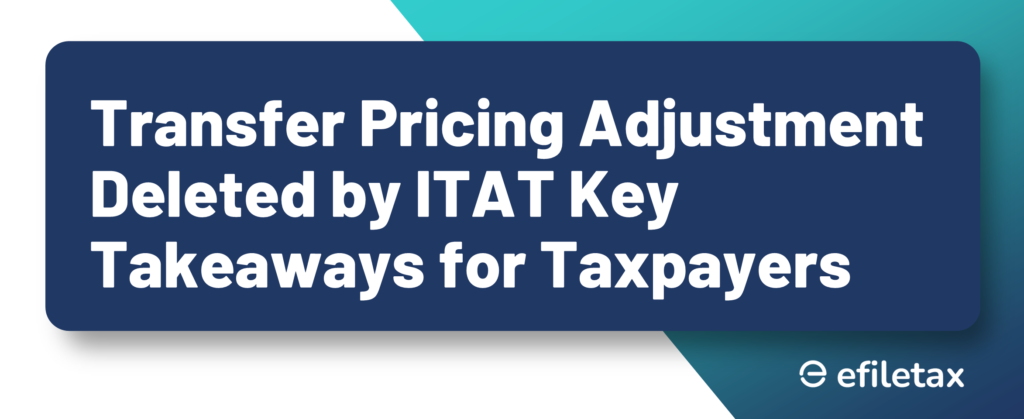
Transfer Pricing Adjustment Deleted: A Relief for Taxpayers?
The Income Tax Appellate Tribunal (ITAT) recently provided partial relief to a taxpayer by deleting transfer pricing adjustments made by the Assessing Officer (AO). This case once again highlights how scrutiny under transfer pricing can lead to disputes, and why proper documentation and expert handling is critical.
Let’s break it down in simple terms.
What Is Transfer Pricing Adjustment?
Transfer pricing refers to the pricing of transactions between associated enterprises (e.g., Indian parent and foreign subsidiary). If the tax department believes these prices are not at “arm’s length,” it can make adjustments to increase the income—and tax liability—of the Indian entity.
Why Adjustments Happen:
- Misalignment with Arm’s Length Price (ALP)
- Inadequate or improper documentation
- Use of incorrect comparables
Highlights of the ITAT Ruling
- The assessee challenged the AO’s Transfer Pricing Officer (TPO) order.
- The ITAT found inconsistencies in how the TPO selected comparables.
- The tribunal partially allowed the appeal, deleting the transfer pricing adjustment.
- It also directed fresh scrutiny of some unresolved issues.
This ensures the taxpayer is not penalised unfairly without proper benchmarking and process.
Legal Angle & Case Reference
As per Section 92C of the Income-tax Act, 1961, every international transaction must be at ALP.
In this case:
- The ITAT noted violations of Rule 10B(2) (selection of comparables).
- It also referenced judicial precedents where improper functional analysis led to deletion of adjustments.
Source: taxmanagementindia.com highlight
Key Lessons for Businesses Under Transfer Pricing Scrutiny
✅ Maintain detailed documentation (Rule 10D)
✅ Ensure functional, asset & risk (FAR) analysis is clearly presented
✅ Challenge unfair comparables and seek expert benchmarking
✅ Keep communication records with TPO/AO during proceedings
Expert Tip:
“Many adjustments happen simply due to poor documentation or mismatch in comparables. If you’re engaged in cross-border transactions, getting a TP study from a qualified consultant isn’t optional—it’s protection.”
Common Mistakes Leading to TP Adjustments
| Mistake | Risk |
|---|---|
| Ignoring transfer pricing study | High penalty risk |
| Using old comparables | Invalid benchmarking |
| Not explaining business model | Functional mismatch |
| Not replying to TPO notices | Ex-parte assessment |
Why This ITAT Ruling Matters
- Reinforces the need for robust defence in TP cases
- Demonstrates that AO/TPO orders can be challenged successfully
- Encourages transparency and better processes in audits
Need Help with Transfer Pricing Compliance?
Don’t wait till you receive a show-cause notice.
📞 Contact Efiletax Transfer Pricing Support
We assist with:
- TP documentation
- Audit defence
- Expert representation at ITAT and CIT(A) levels
Summary
ITAT deleted transfer pricing adjustment due to flawed comparables. The ruling emphasizes proper documentation, benchmarking, and the taxpayer’s right to challenge unfair tax demands. A must-read for businesses in international transactions.
Optional FAQ Section
Q1. What happens if I don’t maintain transfer pricing documentation?
You may face adjustments and penalties under Section 271AA and 271G.
Q2. Can I appeal a TPO adjustment?
Yes. First to CIT(A), and then to ITAT.
Q3. Is a TP study mandatory for every international transaction?
If your aggregate value exceeds ₹1 crore, it’s mandatory as per Rule 10D.